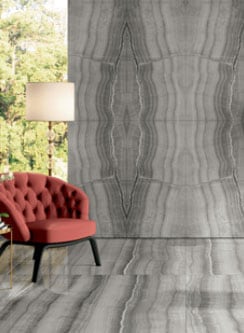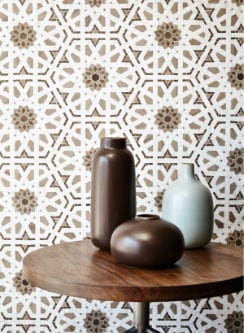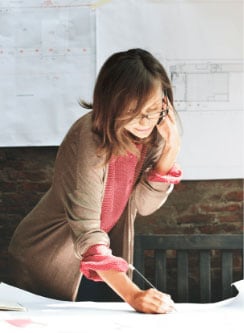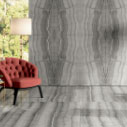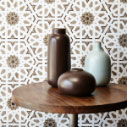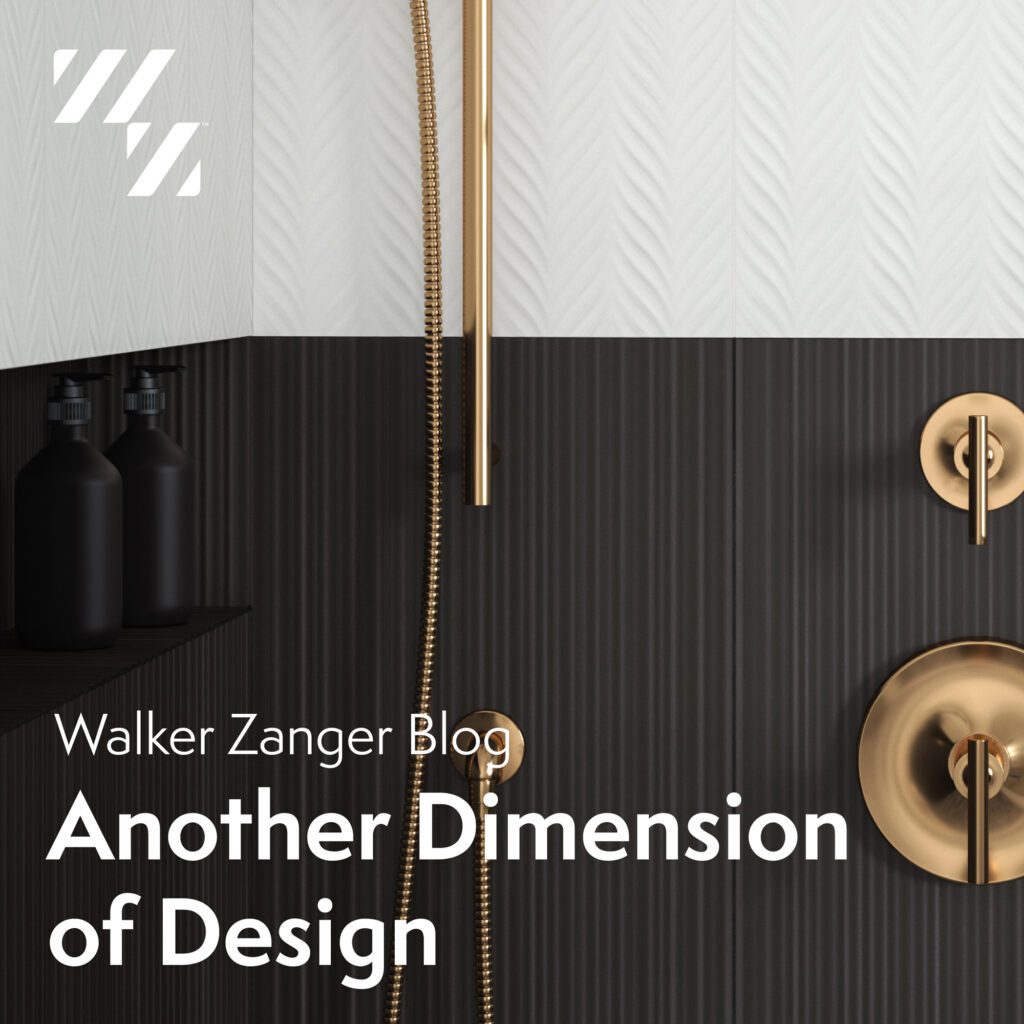
History in Porcelain
Texture Talks
There are a myriad of ways in which designers may add interest to the spaces they create. But aside from incorporating unique forms, materials, and accessories, the most fundamental element in their repertoire is texture.
Texture can be many things to design, but it is primarily visual. The eye discerns texture from detail, perceiving textures even when a surface is flat. For example, a marble slab such as Arabescato Rosso has such intricate coloration within it that our eyes can’t help but register it as textural, and thus it will inevitably draw the attention and focus of the viewer.
Even assembling different colors of tile (such as with the Harper Collection) will create interest-drawing visual dimension within a design.
However, when most people think of texture, they are thinking of something tactile and dimensional – surfaces that can be both seen AND felt. Of course, this adds an entirely new dimension to design, and the creativity of designers exploring the interplay between visual and tactile textures have really expanded the ongoing trend of dimensional design.
Dimensional Tile Design
Contemporary tile manufacturers are constantly pushing the boundaries of ceramic technology to develop new and innovative dimensional tile products. The video below shows dimensional tile from our Robert A.M. Stern Collection being hand-pressed and prepared for firing (This collection was created in collaboration with renowned architect Robert A. M. Stern).
The growing availability of fresh, contemporary dimensional tile products is opening designers to bold new design concepts made possible by this added dimensionality.
However, it is important that they understand the limitations of dimensional designer tiles, and how to best incorporate them into their designs. We’ve assembled three easy rules to help guide you.
RULE 1: Think Vertically
The first rule of design with dimensional tile is to stick with vertical surfaces. This should be fairly obvious, since dimensional tile tends to make horizontal surfaces difficult to use, but it is worth noting, if only to explore the exception to this rule.
That exception is actually quite commonly applied in bathrooms, where wet surfaces can be quite slippery. Designers often choose to equip these surfaces with textured products such as the disk or cube mosaics found in collections like Pop Culture. When fully grouted, the texture of these mosaics provides ample traction for the shower floor, or anywhere else where floors may become damp and slippery, such as patios and other exterior surfaces.
RULE 2: Keep it Clean
The second important rule to remember when designing with dimensional tile is the actual function of the surface within your design. Often, tile is used in areas where water or other substances are present because it is hygienic and easy to clean. But texture can have an impact upon this.
For example, our Bera & Beren Collection features “Saw” field tiles with long linear grooves. For many dimensional tile products, grooves such as these can be problematic when applied to the walls of a shower or kitchen backsplash because dirt or moisture may collect within these grooves. However, the ceramic material of our Bera & Beren tiles makes them remarkably easy to keep clean.
Regardless of creative vision, we recommend that designers take care to ensure that their designs – whether for kitchen, bathroom, fireplace, or accent wall – will be easy to maintain so that the beauty will endure for a lifetime.
RULE 3: Keep the Volume Down
Because texture draws interest, the third rule of using dimensional tiles in your design is to apply them sparingly. Too much texture in any surface will add visual noise to a design, impacting the serenity of the space.
How much texture is too much? This, of course, depends upon the design, but it’s a good idea to start with very little, and add more as needed. Bear in mind that visual texture also contributes to the “noise” of a design, so it makes sense to keep your color palette limited when designing with dimensional tile.
A good example of this can be found in our Gubi Collection of porcelain tiles and mosaics. Gubi was developed for minimalist design sensibilities, pairing large format flat field tiles with linear textured tiles of the same color. This allows designers to create areas of interest – such as a focus wall – through the application of texture alone. The monochromatic palette and Gubi’s earthy, neutral tones help keep its visual noise at a minimum.
This principle also applies to more brightly colored tiles, such as those found in our beautifully dimensional 4D Collection. This collection features ceramic and porcelain tiles in either deep teal or vivid white, both with and without dynamic geometric textural elements. Like Gubi, the 4D Collection tiles are able to build interest within a monochrome palette, but they can also be paired in high contrast combinations to amplify and direct that interest.
Of course, dimensional tile design is not required to be monochromatic. Through the creative exploration of both visual and tactile textures, designers will inevitably discover a plethora of unique combinations resulting in sublime and innovative designs.
Make Walker Zanger’s dimensional tile collections an integral part of your designer toolbox, and take your designs into an entirely new dimension.













